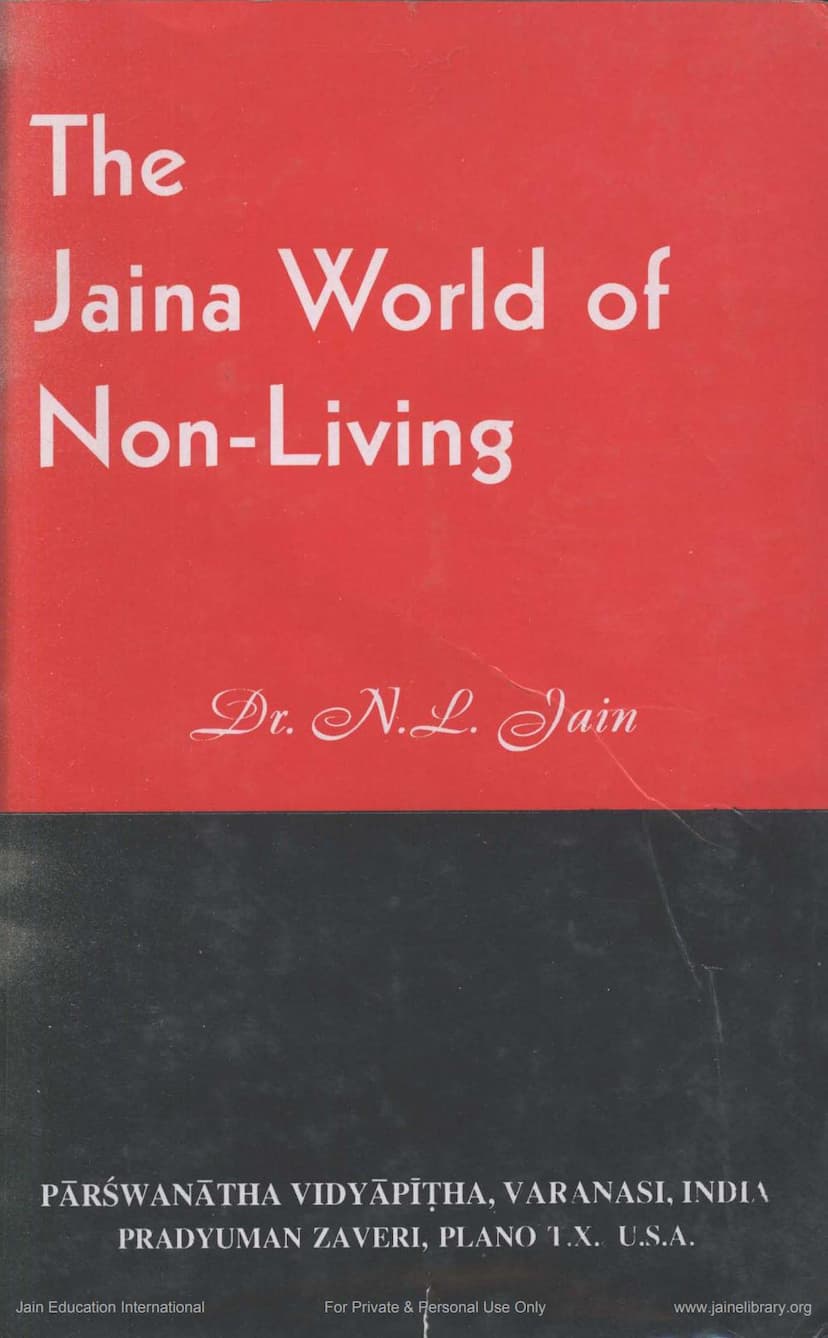Jaina World Of Non Living
Added to library: September 2, 2025

Summary
"The Jaina World of Non-Living" by Dr. N. L. Jain, published by Parshwanath Vidyapith, Varanasi, India, is an English translation of the fifth chapter of the Tattvārtha-Rājavārtika by Ācārya Akalanka. This work offers a comprehensive study of the non-living realities (Ajiva) within the framework of Jain philosophy, as expounded in the Tattvārthasūtra of Ācārya Umāsvāti.
The book delves into the Jaina understanding of the non-living world, covering a wide range of topics that are remarkably aligned with modern scientific concepts in physics, chemistry, and biology. Dr. Jain's translation is accompanied by critical and supplementary notes, providing valuable insights into the scientific and philosophical depth of ancient Jaina texts and comparing them with contemporary scientific understanding.
Key themes and concepts explored in the book, based on the provided text, include:
- The Nature of Realities (Dravyas): The book explains the Jaina concept of six realities in the physical world: the medium of motion (Dharma), the medium of rest (Adharma), space (Akasha), mattergy (Pudgala), the living being (Jiva), and time (Kala). Chapter Five specifically focuses on the non-living realities.
- Mattergy (Pudgala): A significant portion of the chapter is dedicated to mattergy, described as an entity possessing touch, taste, smell, and color. The text discusses its varieties into ultimate atoms (Anu) and aggregates (Skandha), their properties, and the rules governing their bonding and formation. The Jaina concept of atoms and their properties, such as indivisibility and space-point occupancy, are explored in detail, with comparisons to modern atomic theory.
- Space, Time, and Auxiliary Realities: The book elucidates the Jaina understanding of space (Akasha) as an infinite and pervasive reality that accommodates all other realities. The medium of motion (Dharma) and rest (Adharma) are presented as non-material, pervasive, and eternal entities that function as auxiliary causes for motion, rest, and order in the universe. The reality of time (Kala) is also discussed, including its absolute and apparent forms, its functions in continuity and change, and its infinite nature in terms of Samaya units.
- Functions and Interactions: The text explores the functions of these non-living realities, such as mattergy forming bodies, speech, and mind, and assisting in pleasure, pain, life, and death. It also highlights the principle of mutual support among living beings (Paraspara-upagrahō Jīvānām) and the inherent characteristics of different realities.
- Scientific Correlations: Dr. Jain's supplementary notes draw parallels between ancient Jaina concepts and modern scientific theories, particularly in the realm of physics and chemistry. For instance, the concepts of Dharma and Adharma are compared to Newtonian ideas of Aether and Fields, and the rules of atomic bonding are discussed in relation to modern valency theories and electrical charges. The text also touches upon the Jaina understanding of sound, light, and heat, comparing them with scientific findings.
- Refutation of Other Philosophical Systems: Ācārya Akalanka's commentary, as translated, actively engages with and refutes the philosophical viewpoints of other contemporary Indian schools of thought, such as the Vaiśeṣikas and Buddhists, on matters of reality, causation, and the nature of attributes and modes.
- The Tattvārthasūtra and Akalanka's Commentary: The introduction provides a historical context of the Tattvārthasūtra, its importance within Jainism, the debates surrounding its authorship and dating, and the significance of Akalanka's commentary, Rājavārtika, as a seminal work in Jaina logic and philosophy.
"The Jaina World of Non-Living" aims to make these complex Jaina concepts accessible to a wider audience of scholars and general readers, presenting them through a logical and systematic methodology. The book's comprehensive approach, blending ancient wisdom with modern scientific perspectives, makes it a valuable resource for understanding the intricate Jaina worldview concerning the non-living aspects of existence.